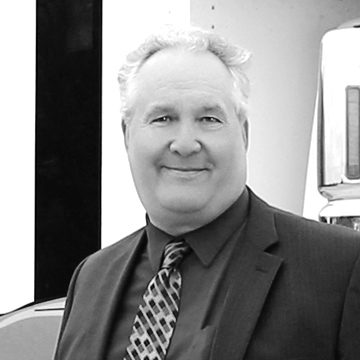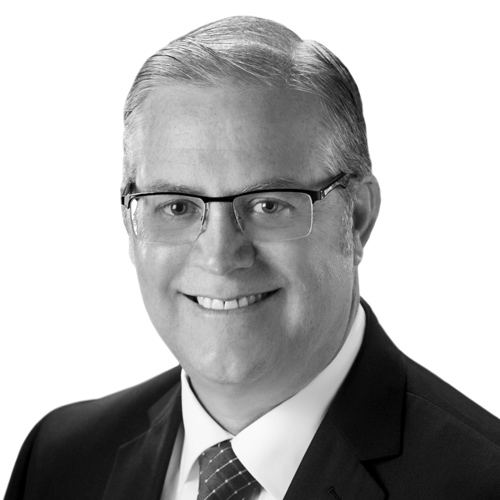Larry Kleinman, executive vice president and chief human resources officer at Highmark Health, started his own candy store at a young age. That business experience selling sweet treats, and later wholesaling fudge and ice cream, has continually helped him make a significant impact as an HR executive at the second-largest integrated healthcare delivery and financing network in the nation. At Highmark, Kleinman applies a business-first mind-set to his HR role.
Pittsburgh-based Highmark Health employs more than forty thousand people nationwide and serves nearly fifty million Americans in all fifty states. Kleinman joined the organization in 2015, and has focused on reshaping the HR function. Much the way that Kleinman had to attract customers to shop at his candy store, he has to get Highmark’s employees on board with his HR policies if they are going to be effective, he says. “If you think about running HR like running a business, you know you have to earn that business every day,” he says. The business of HR at Highmark is already booming: within Kleinman’s second year, he improved overall HR effectiveness by 12 percent, all while the company underwent significant transformation.
One catalyst for this quick turnaround is a new technology platform that the company implemented under budget and in less than a year’s time. It streamlined 517 processes and created the HR Employee Service Center for 41,000 employees.

“All of those processes were reevaluated through the lens of what our customers want that process to look like, not what would be easier on HR,” Kleinman says.
He has also helped Highmark’s CEO and executive team realize an aggressive vision that helped the company make a $577 million turnaround in 2016. Highmark is in the midst of establishing an integrated healthcare delivery and financing system. The organization has presented an unusual challenge for Kleinman. “The difference is they were all healthcare providers that added some insurance over time,” he explains. “This has never been done from the payer side because it’s so complicated.”
Kleinman learned how to move forward with the HR vision by relying on the business-first approach he gained from his entrepreneurial days. That perspective was crucial, because the Highmark leadership team had a lot of new faces at the time, and it was his responsibility to get everyone on the same page.
Kleinman showed them hard data from the measurement surveys and other research he’d done, then laid out several options based on that data to move forward on the vision.
“We knew what the cost structure was and where the benchmarks were,” Kleinman says. “You build a lot of credibility when you have your facts together and present investment options. It’s no different from creating a business plan.”
Kleinman has been a catalyst for positive change his entire career, but his first HR executive job may have been his most radical. In 1996, Nabisco hired him as senior director of HR, overseeing the function at Planter’s Peanuts.
“What I did there I wouldn’t do anywhere else,” Kleinman says. “We designed the organization around chaos theory. The business had been around for ninety years and had hit a wall.”
Planter’s was based in North Carolina back then, and Nabisco moved the operation to its home base in New Jersey to keep a closer eye on it. Only twelve people made the move, and three of them left soon after they relocated.
“Suddenly, we had this green field opportunity,” Kleinman explains. “Our CEO was new and energetic and wanted to create an entrepreneurial organization.”
“If you think about running HR like running a business, you know you have to earn that business every day.”
Employees were told that management didn’t care what they did or how they did it, as long as they got results that supported the overall goals of the business. Hence, the chaos—but it proved to be effective chaos.
“We had so many people just wildly energized about what they could do because they had no restrictions,” Kleinman says. “We were hitting on every cylinder and turned around on a dime. It was a lot of fun.”
Kleinman joined German software company SAP in 1999, a time at which its sales team was enduring heavy turnover. The prevailing wisdom at the time was that talent was leaving for jobs in the Internet industry. Not satisfied with that conclusion, Kleinman wanted to see data that proved it.
“I looked at the numbers, and it didn’t have any correlation to why salespeople were leaving,” says Kleinman, who eventually established an overall talent profit-and-loss statement that let him test the revenue consequences of human capital investment options. In essence, he quantified talent. It took a few years to see results, but based on talent metrics, his efforts to hire the right people for SAP put $100 million back into the business.
Now that he has stabilized the HR function at Highmark Health, Kleinman is already on his way toward having a similar impact. For instance, he noticed a cycle of reliance on outside consulting firms. They’d come in, render advice, and then the company would go back to business as usual, prompting the cycle to repeat itself.
Kleinman launched an internal consulting group called Enterprise Effectiveness, which has twelve projects underway and has already yielded about $50 million in value this year alone through cost reductions, asset efficiencies, productivity increases, and other measures.
“There is so much demand that we can’t staff it fast enough,” Kleinman says. Along with the CEO and CFO, Kleinman determines where to deploy the group. “It’s worked so well that the rest of the executive team wants more input because they want more services,” he explains. “We’ve created strong demand.”
If history is any guide, the demand for Kleinman’s ideas and initiatives should only grow—right along with Highmark’s bottom line.

